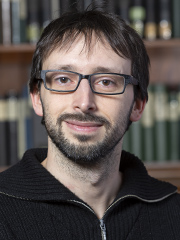| I am a staff scientists at the Institute of Radioastronomy (IRA-INAF) and Junior Professor at the Observatory of the Hamburg University. My research is mainly based on developing and exploiting new technologies in radio-astronomy to study active galactic nuclei (AGN), galaxy clusters, galaxies and ultimately everything which emits radio waves. I am specialised in the observations at ultra-low frequencies (<100 MHz), the longest wavelengths that we can observe from ground based telescopes. To carry on this research I have been awarded the ERC Consolidator Grant “Ultra Low Frequency Universe” (ULU). I am part of the LOFAR collaboration and most of my time is invested in the commissioning of this new radio-telescope. Thanks to this telescope we are opening up a new window on the Universe by observing at very low radio frequencies (10-240 MHz). The heart of LOFAR lies in the Netherlands, but the telescope stations are spread all over Europe and connected with ultra-fast optical fibers to a supercomputer in Groningen. I am now leading the effort to calibrate the low band antennas of LOFAR to observe the sky at decameter wavelength. Our plan is to ultimately produce the lowest frequency radio survey ever done. Until 2017, I was VENI fellow at the Observatory of the Leiden University. I did my PhD at the Max Planck Institute für Astrophysics in München on a thesis titled: “The impact fo radio-emitting supermassive black holes on their environment: the LOFAR view of the Virgo cluster”. During my master I also worked for the ESA satellite Planck. Planck was launched on 14 May 2009 and it is designed to study the Cosmic Microwave Background (CMB) – the relic radiation from the Big Bang. |  |